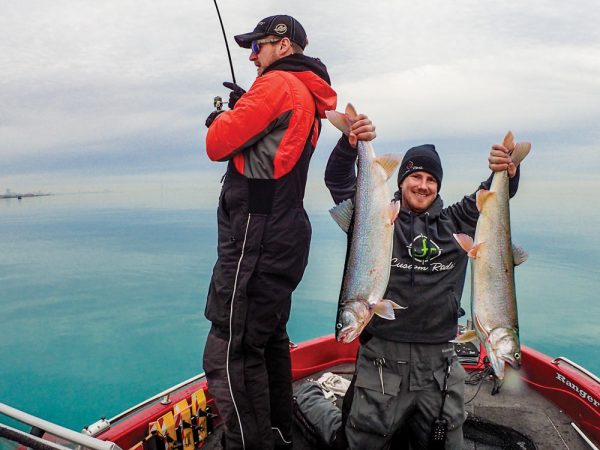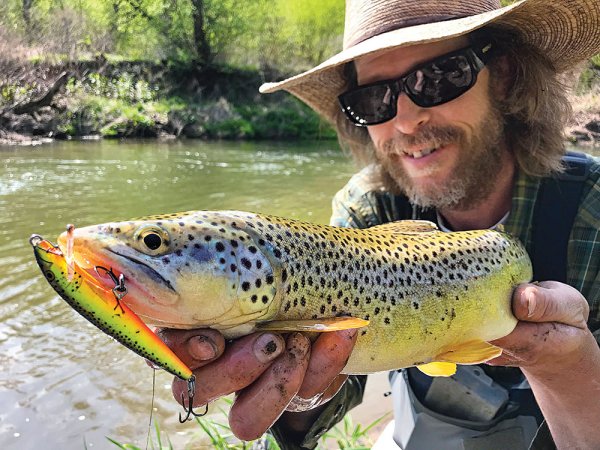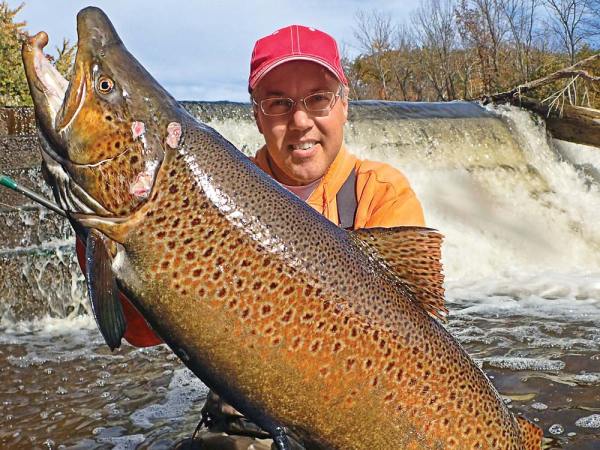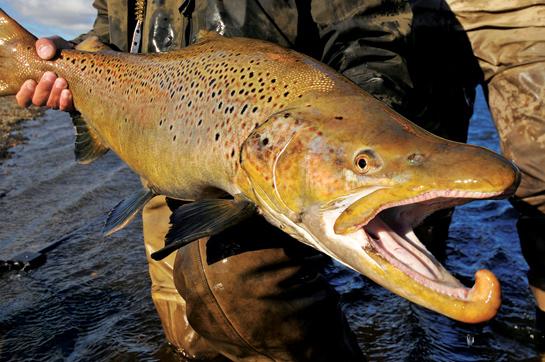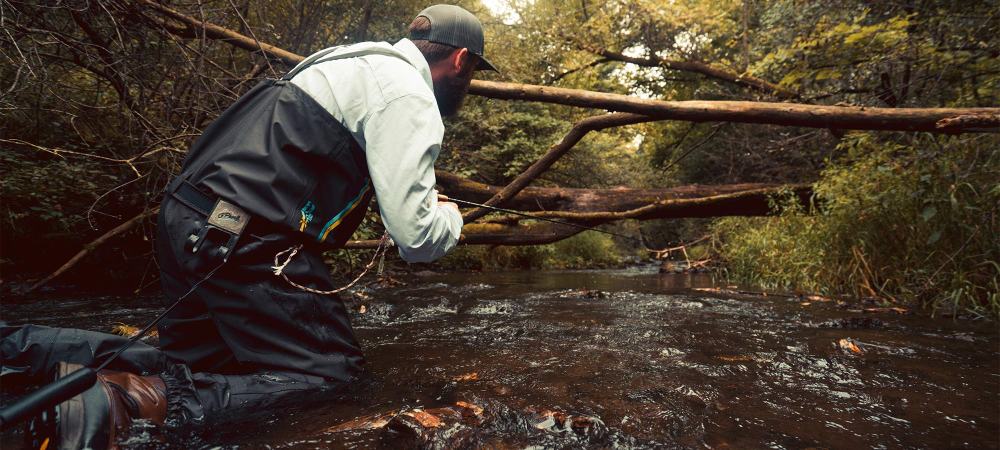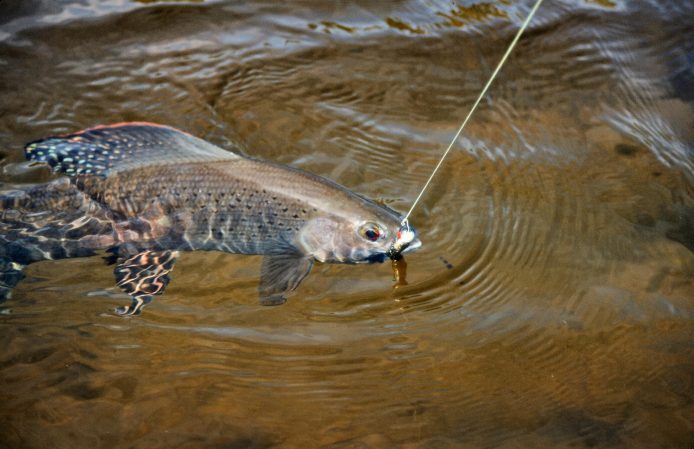No one can blame you if after a long, fruitless day of casting for trout on your favorite river you start to wonder where exactly all the fish have disappeared to. The question of where and why trout move through a river system is exactly what a group of researchers hoped to unravel by studying brown trout in Michigan’s famed Au Sable River. The scientists used radio telemetry to follow 11 fish in the Au Sable day and night for more than 900 days.
One of their key findings is that size matters. Once brown trout reach 13 inches in length, they alter their eating habits. Up to that length they lie in pools, feeding on fish and insects that drift by. But at 13 inches they become active hunters searching for piscine prey. During the day the big fish would hole up and rest in one of several “home sites” that they would return to after a night’s hunt. Usually, the fish pinned themselves tight against debris or other cover.
Most of the fishes’ movement occurred at dusk and dawn. Smaller fish remained stationary because they themselves were potential prey. –Craig Springer
Telemetry study at a glance:
Maximum speed: 870 feet per hour Maximum distance moved in one night: 1.2 miles Median movement during the day: 0 feet Average number of home sites per fish: 2.7 Maximum distance between home sites: 2.2 miles Percentage of brown trout using same home sites each year: 75
For more information, go to www.outdoorlife.com/news/snapshots


